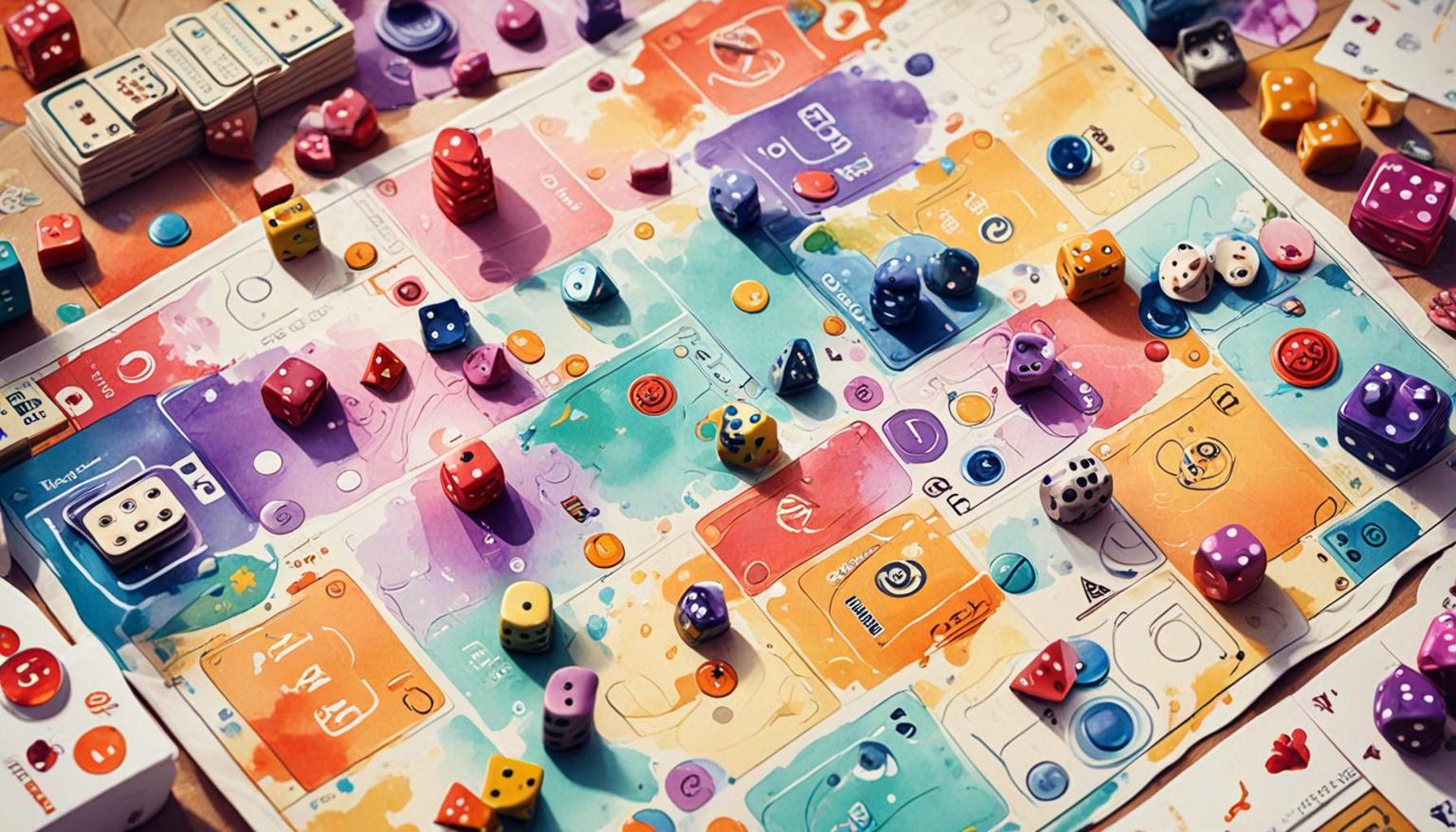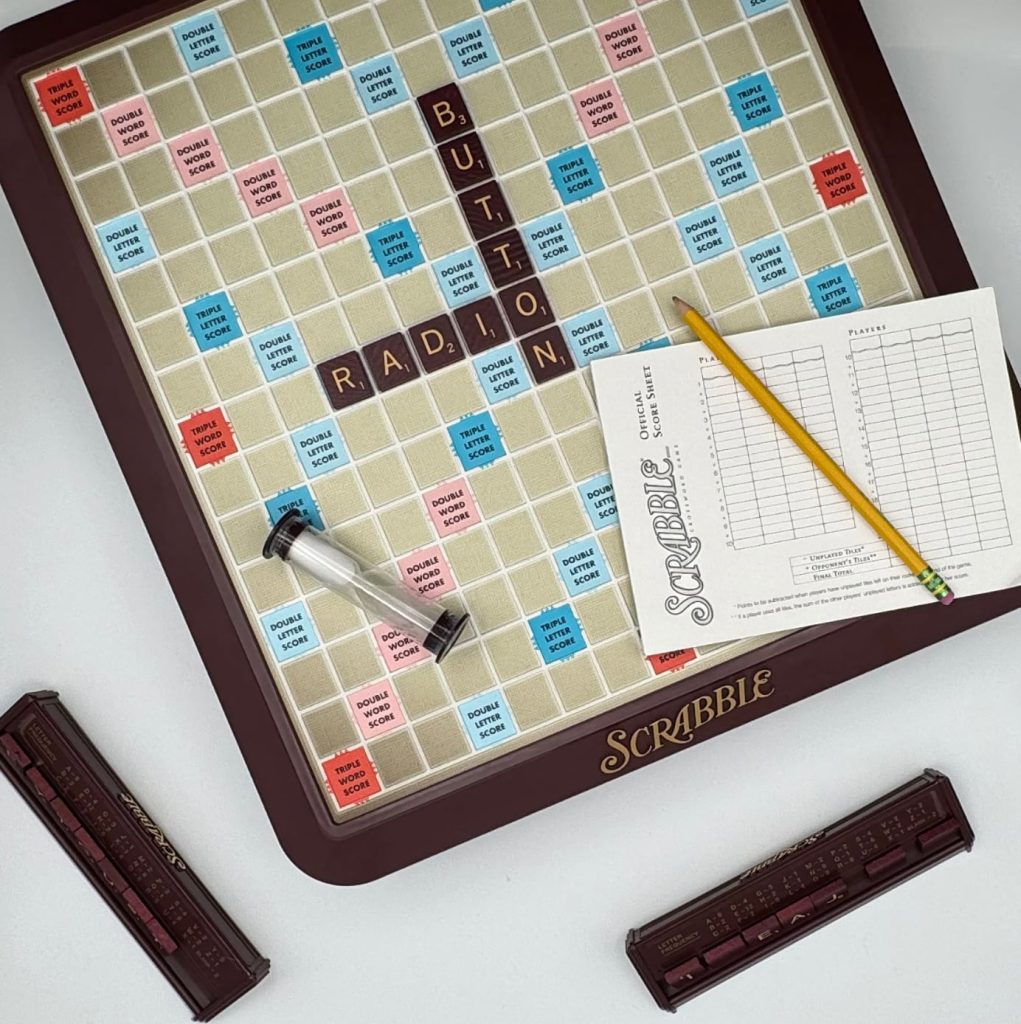How pattern recognition can be applied in modern board games to enhance the gaming experience

Understanding the Role of Patterns in Board Games
In the dynamic world of modern board games, players are not just rolling dice or drawing cards; they are engaging their minds in a complex dance of pattern recognition. This cognitive skill is not merely an accessory; it functions as a backbone for strategizing, predicting opponents’ moves, and navigating intricate game mechanics. By honing their ability to recognize and interpret patterns, players can make informed decisions that significantly enhance their overall gaming experience.
Consider these vital aspects of pattern recognition in board games:
- Strategic Advantage: Recognizing patterns enables players to anticipate their opponents’ strategies, potentially counteracting their moves effectively. For example, in games like Chess, a player who can predict an opponent’s sequence of moves based on previous games is more likely to secure a win. This foresight is the essence of developing a successful strategy.
- Game Dynamics: Many modern games, such as Pandemic or Ticket to Ride, incorporate evolving patterns, ensuring that each playthrough feels unique and challenging. Each game offers different scenarios and player interactions, making it essential for players to adapt to new strategies based on emerging patterns to stay ahead.
- Player Engagement: The ability to recognize patterns allows players to immerse themselves more fully, it’s not just about winning or losing; it cultivates a deeper engagement that goes beyond mere gameplay. For instance, in Carcassonne, players must recognize the spatial relationships of tiles to build cities, roads, and fields effectively, thus enhancing their investment in the game.
In Nigeria and across the globe, games like Catan exemplify how cultural preferences intertwine with pattern recognition to create unforgettable experiences. Players find joy in deciphering resource distributions and trade patterns, revealing the depth of strategy involved. The interaction among players often mirrors local community dynamics and trading practices, emphasizing the relevance of the game experience in reflecting cultural contexts.
As we explore the intricate layers of pattern recognition, consider how incorporating this skill can transform the landscape of board games. It offers players a richer, more engaging experience, unraveling layers of strategy that can keep them coming back for more. Prepare to delve into an adventure in every game session, where each move becomes a new opportunity for discovery and learning!
CHECK OUT: Click here to explore more

Enhancing Gameplay Through Pattern Recognition
In the realm of modern board games, pattern recognition plays a pivotal role in transforming an average gaming session into a thrilling and intellectually stimulating experience. By discerning intricate patterns, players not only improve their tactical decision-making but also elevate their overall engagement with the game. This enhancement comes to life through various mechanisms that govern gameplay, whether they relate to the sequencing of moves, resource management, or player interactions.
One of the key ways in which pattern recognition enhances gameplay is through the establishment of strategic frameworks. Many popular board games incorporate complex mechanics where players must predict and adapt to dynamic conditions. For instance, in games like Catan, players must recognize patterns in resource distribution and competitor behavior to maximize their settlements and trade opportunities. By observing where resources are being accumulated and predicting potential trades, players can make proactive decisions, granting them a competitive edge.
This strategic layer can also be seen in cooperative games such as Pandemic, where the goal is not only to defeat the game itself but also to coordinate actions among team members. Players must identify patterns in the spread of diseases, predict future outbreaks, and collaborate effectively to develop counter-strategies. Engaging with these patterns fosters critical thinking and enhances communication, thereby nurturing deeper social bonds between players.
The Cognitive Benefits of Recognizing Patterns
The application of pattern recognition in board games extends beyond mere strategic advantage; it also provides cognitive benefits that can stimulate and sharpen players’ mental faculties. Engaging with patterns can enhance several essential skills, including:
- Critical Thinking: Players are encouraged to analyze the board and make connections among different game elements. For example, noticing a pattern in an opponent’s plays can lead to a well-timed counteraction, showcasing the importance of cognitive flexibility.
- Memory Enhancement: Many games require players to remember specific moves or outcomes from previous rounds, inviting them to build upon their experiences. This aspect can boost memory recall, especially when players relate their learning to familiar patterns observed in their local environment.
- Emotional Intelligence: Pattern recognition in board games also means reading other players’ intentions and emotional cues. Understanding these dynamics can help players navigate the social landscape of the game, making interactions more meaningful and enjoyable.
In Nigeria, the influence of culture on pattern recognition in board gaming cannot be overlooked. Traditional games, often based on strategic planning and foresight, align closely with the mechanics of modern board games. Games like Ludu, which incorporate move patterns based on dice rolls, resemble the gameplay seen in Western counterparts. As players draw on cultural experiences, they enrich the gameplay with unique insights that resonate with their local sentiments.
Ultimately, pattern recognition is not just a tool for gaining advantages; it transforms the very essence of gameplay, transforming it into a richer tapestry woven with thought, strategy, and social interaction. By understanding and leveraging patterns, players can cultivate memorable experiences that extend beyond the confines of the game board.
Understanding the Impact of Pattern Recognition in Board Games
As players engage with modern board games, the role of pattern recognition becomes increasingly pivotal in enhancing their overall gaming experience. This cognitive skill allows players to identify recurring themes, strategies, and potential outcomes based on previous gameplay. By actively recognizing patterns in game mechanics, players can make informed decisions, significantly influencing the game’s results.
Strategic Enhancement through Recognizable Patterns
In many contemporary board games, the incorporation of recognizable patterns can facilitate deeper strategic gameplay. For example, games such as “Pandemic” require players to recognize the spread of diseases and strategize their moves accordingly. Players who excel at pattern recognition are often able to predict their opponents’ strategies and respond effectively, leading to a more dynamic and interactive experience. Moreover, games designed with asymmetrical gameplay exemplify how diverse player roles can lead to a variety of patterns. In “Root,” for instance, each faction operates under different rules and objectives. Players adept at identifying the gameplay patterns unique to each faction can exploit opportunities, enhancing the competitive nature of the game.
Cognitive Engagement and Memory Retention
Pattern recognition also contributes to improved cognitive engagement and memory retention within board games. As players familiarize themselves with the mechanics and strategies, they build a mental library of successful patterns. This not only enriches the gaming experience but also encourages players to revisit the game to refine their strategies, leading to increased replayability.Overall, the ability to recognize patterns not only adds depth to the gameplay but also fosters a community of players who share insights and strategies, ultimately elevating the excitement and engagement level within modern board games.
| Category | Advantages |
|---|---|
| Improved Strategy | Allows players to predict outcomes and make informed decisions. |
| Enhanced Memory | Fosters cognitive engagement and increases replayability. |
YOU MAY ALSO LIKE: Read read another article
Innovative Game Mechanics Utilizing Pattern Recognition
Modern board games increasingly capitalize on pattern recognition as a central mechanic, crafting intricate systems that challenge players in new and engaging ways. Games like 7 Wonders harness this concept through multispectral strategy, where players must identify and predict patterns in card drafting. The excitement comes from the ability to discern not just immediate benefits, but the long-term repercussions of card choices, fostering an exhilarating competitive atmosphere.
The layering of patterns in these games often extends to the interaction between players. In Coup, for instance, players must cultivate astute observation skills to recognize who bluffs, who holds power, and which alliances may form over time. As players become savvier, the level of psychological play increases, allowing them to weave intricate social dynamics into the fabric of strategy. This amalgamation enhances the gameplay experience, making every session a unique exploration of human behavior, deception, and strategic depth.
The Role of Algorithmic Design in Pattern Recognition
Moreover, the design of modern board games is increasingly influenced by computational algorithms that mimic pattern recognition found in artificial intelligence. Game developers use data-driven insights to create engaging mechanics that challenge players to recognize and adapt to patterns swiftly. A perfect example of this is found in games like Scythe, where players must evaluate not just their own moves but also anticipate the actions of others based on established game patterns.
Incorporating algorithmic principles not only enriches the strategic depth of the game but also provides a framework for an evolving gaming experience. As groups play repeatedly, they develop a shared understanding of the game’s nuances, enhancing their ability to recognize patterns related to strategies that have previously succeeded or failed. The result is a dynamic learning cycle that keeps players returning for one more round, continually refining their skills and enjoyment.
Multi-Cultural Perspectives on Pattern Recognition in Board Games
The impact of pattern recognition in board games resonates deeply within the context of diverse cultures. In Nigeria, for instance, traditional board games like Damii (checkers) and Ngolo (similar to Ludo) exemplify how ingrained strategic thinking develops through recognizing patterns over time. These games often revolve around anticipating an opponent’s next move, showcasing the cultural importance of critical thinking and foresight.
As local game designers merge traditional elements with modern mechanics, they nurture an increasing appreciation for the cognitive processes involved in gameplay. By integrating traditional patterns with innovative modern design, they create unique gaming experiences that speak to both heritage and contemporary interests. Players in Nigeria can engage with these modern adaptations while drawing upon their familial and cultural knowledge of strategy, resulting in a richer gaming experience that not only entertains but educates.
Ultimately, the application of pattern recognition in modern board games offers players a robust platform for fostering not only strategic skills but a deeper connection to their own cultural narratives. As players engage with evolving game mechanics, they find themselves not just playing a game, but participating in a vibrant exchange of strategies, insights, and shared experiences.
SEE ALSO: Click here to read another article
Conclusion: Embracing Pattern Recognition for Enhanced Gameplay
In today’s dynamic landscape of board gaming, the integration of pattern recognition serves as a powerful catalyst for elevating player engagement and enjoyment. From intricate strategy games like 7 Wonders to psychological challenges such as Coup, players are constantly prompted to sharpen their observation skills, anticipate opponents’ moves, and adapt to existing patterns within the gameplay. This multifaceted approach not only cultivates critical thinking but also enriches the communal experience by weaving social dynamics into strategic decision-making.
The rise of algorithmic design further enhances this phenomenon, allowing developers to create games that are not only challenging but also responsive to player behaviors. By blending data-driven insights with traditional gaming elements, modern board games expand the depth of interaction and strategy available to players. As seen through vibrant cultural lenses, particularly in Nigeria’s adaptation of classic games into contemporary formats, pattern recognition encourages an immersive play experience that connects players to their heritage while offering room for exploration and growth.
Ultimately, the application of pattern recognition in board games transforms casual leisure into an arena of intellectual stimulation, fostering not just skilled strategists but also a shared communal bond among players. As gaming enthusiasts continue to navigate these multifaceted layers of gameplay, they embark on exciting journeys of connection, learning, and discovery. The future of board gaming lies in embracing these patterns, propelling the evolution of not only the games themselves but the experiences they offer, inviting players to think critically and play a little deeper.


